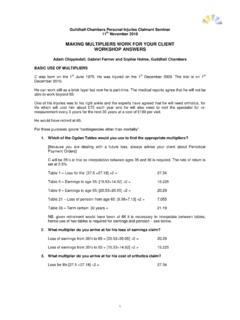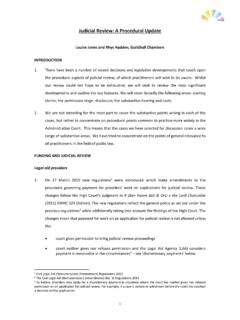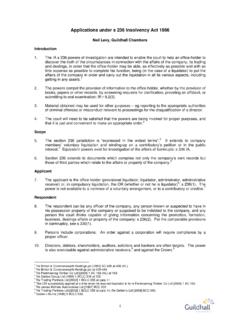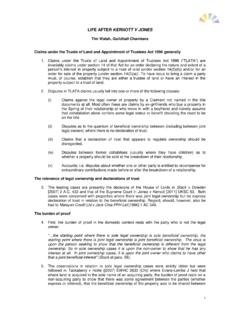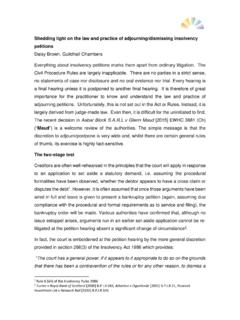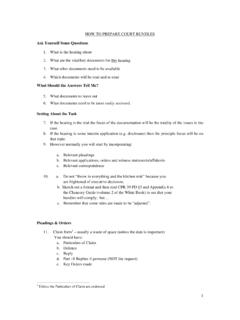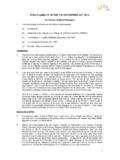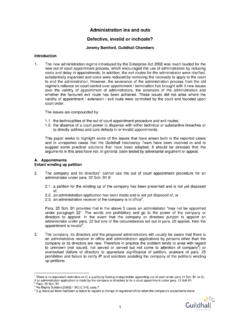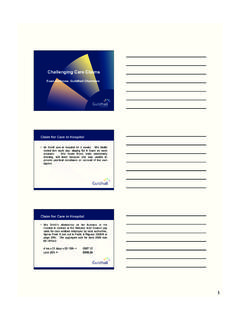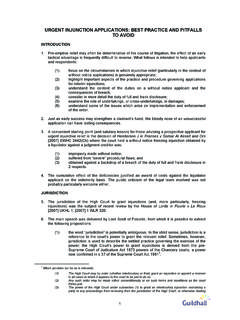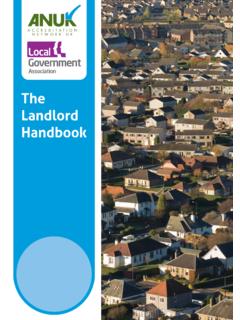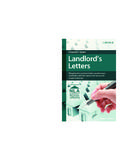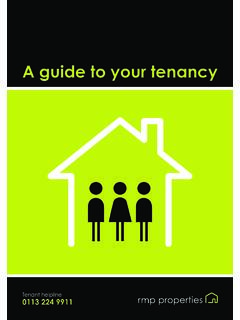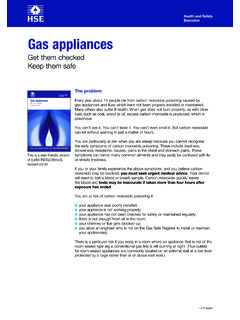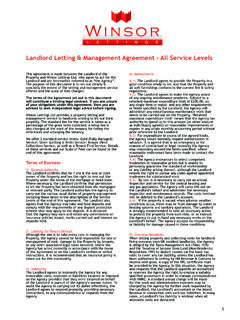Transcription of CLAIMS AGAINST LANDLORDS AND THE …
1 1 CLAIMS AGAINST LANDLORDS AND THE defective premises ACT 1972 Tom Panton, Guildhall Chambers, June 2016 Introduction 1. Personal injury CLAIMS AGAINST LANDLORDS can raise difficult and technical questions of law. They are also inevitably highly facts-sensitive. 2. From the defendant perspective, the technicality of this area can actually prove beneficial. In the right case you may legitimately be able to seek early strikeout or summary judgment. The potential advantages of that approach in the QOCS era cannot be overstated. From the claimant perspective, it is actually quite easy to overlook potentially strong lines of argument.
2 Thus for both sides there is real benefit in ensuring that you have a firm grasp of the sort of issues that can arise. 3. This talk and these notes are not an exhaustive analysis of the law in this area. The intention is to provide an outline of certain key principles and key areas of argument so as to assist in analysing this sort of case. 4. It is necessary to consider four key areas of potential liability: a. Contract b. Common law negligence c. Occupiers Liability d. The defective premises Act 1972 5. As we will see, on the present state of the law the first and fourth of those are by far the most significant.
3 It is however important to understand the second and third so as to ensure one is alive to the potential for them to be deployed erroneously, as they are with surprising regularity. 6. This talk will not attempt to analyse potentially complex questions concerning the precise nature and terms of the relationship between parties in individual cases ( whether a tenancy exists, to what extent particular terms were or were not incorporated, whether that 2 matters, etc). In all of what follows the assumption is that there is a tenancy agreement in place between a landlord and a tenant.
4 The tenant, of course, may not necessarily be the person who has suffered the injury giving rise to the claim. Contract 7. As in the general law, a contractual cause of action for personal injuries AGAINST a landlord may arise in one of two ways a breach of express terms of the tenancy agreement, or a breach of implied terms. 8. In fact, and this cannot be emphasised enough, the terms of the tenancy agreement are likely to be of key significance in any personal injury claim brought AGAINST the landlord , regardless of which cause of action the claimant (who as noted above may not actually be the tenant) is relying upon.
5 We will return to this point below. In practical terms this means that, at the risk of stating the obvious, one of the very first enquiries which must be made in any claim of this kind is as to the existence and whereabouts of the relevant tenancy agreement. 9. The next and vital point to make about contractual CLAIMS is that a claim for breach of contract as such can invariably only be brought by people who were parties to the contract1. This invariably means the tenants themselves. 10. The best illustration of this principle is probably Cavalier v Pope [1906] AC 428. In that case the property was let to the claimant s husband.
6 The kitchen floor was dilapidated. The tenant drew this to the landlord s attention and threatened to leave. The landlord promised to put it right but did not. The tenant s wife (who was not a party to the tenancy agreement) fell through the kitchen floor and was injured. The House of Lords held she had no cause of action (this case is also relevant to negligence, of which more below). She was not a party to the contract and could not sue upon it. Her husband could sue, but not in respect of her injuries. Her claim failed. 11. Of course in many cases it is one of the tenants who is suing.
7 Thus the next and crucial question is, what are the terms of the agreement? Would they cover the situation at hand? 12. Obviously this issue is facts-sensitive. The starting-point is to identify what has caused the accident or injury in question. The next step is to consider what coverage, if at all, that issue is given in the contractual terms. 1 It is of course legally possible for contracts to confer rights on third parties, but experience suggests that this is not yet exactly universal practice in the context of landlord and tenant arrangements. 3 13.
8 The simplest example is where injury has been caused by some kind of defect in the property (for example a collapsed kitchen floor or faulty stairs). That fact of itself requires us to look at what (if anything) the tenancy agreement says about repairs2. 14. There is infinite scope for variety. It is conceivable, if these days unlikely, that the agreement will say nothing at all. More probably it will have some kind of repairing provision. Local authority or housing association agreements are extremely likely to do so. Looking at the precise scope of the repairing obligations placed upon the landlord in the individual case will tell you whether the particular defect in question is something which the landlord was obliged to address.
9 If it was, there is a potential breach of contractual duty (we return to this point below). 15. Importantly, even in the absence of relevant express provisions you will still need to consider implied terms. By far the most important in the context of residential lettings are the terms implied by operation of statute, namely section 11 of the landlord and Tenant Act 1985. In a nutshell, that section imposes repairing obligations onto LANDLORDS by implying contractual terms into short leases requiring the landlord to keep in good repair the structure and exterior of the property as well as installations for supply of gas, water, electricity, sanitation, heating and hot water.
10 16. Plainly that is quite an onerous list of obligations. The key point for present purposes is that these obligations are contractual in nature the section operates, as noted above, by implying terms into the lease. Thus again, the key question is to consider whether your particular issue falls within the scope of those implied contractual obligations. If it does, the landlord is potentially in breach. 17. Critically however, even if the defect in question does fall within the landlord s express or implied obligations to repair, that does not necessarily of itself establish the claimant s cause of action.
